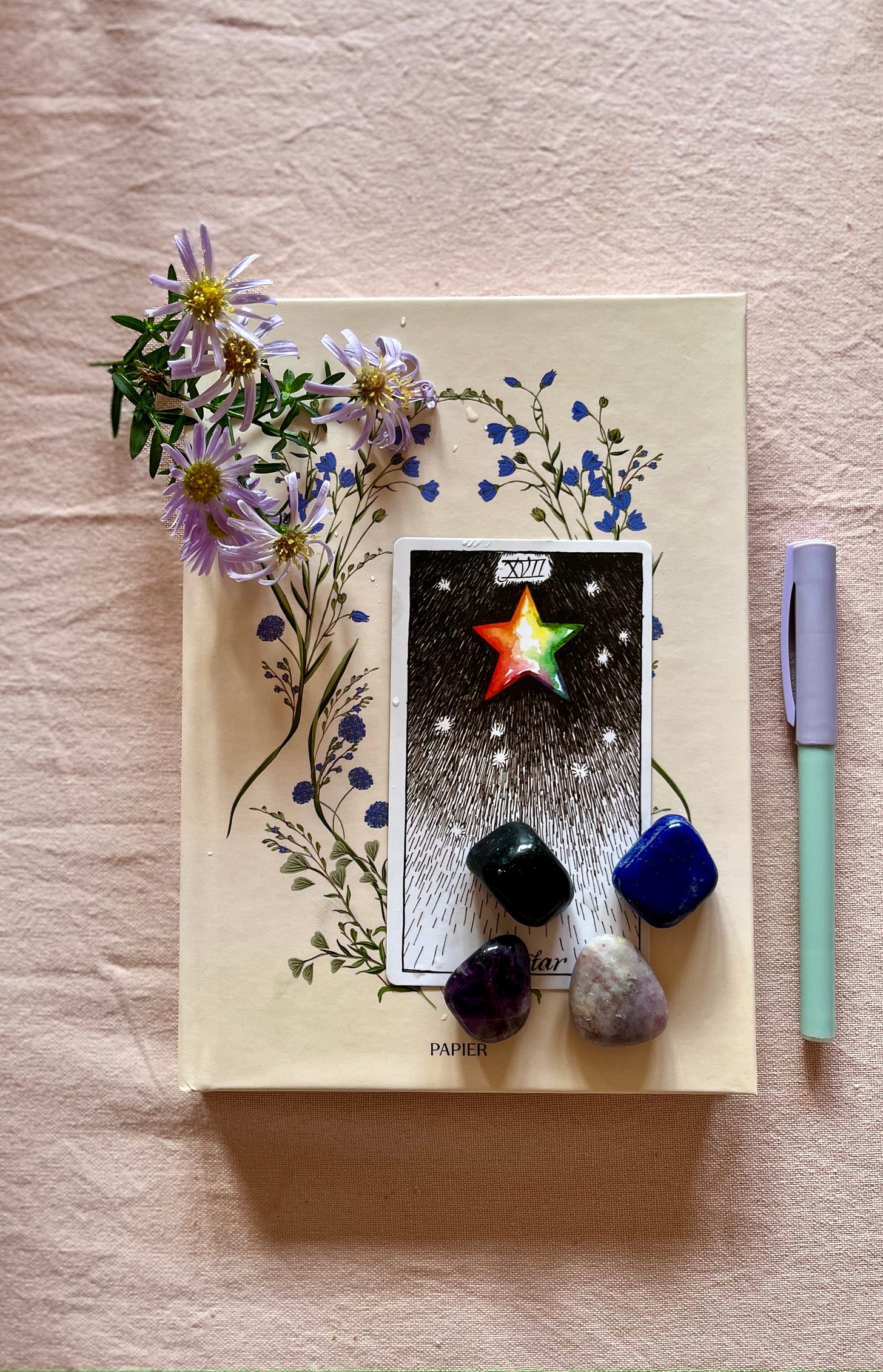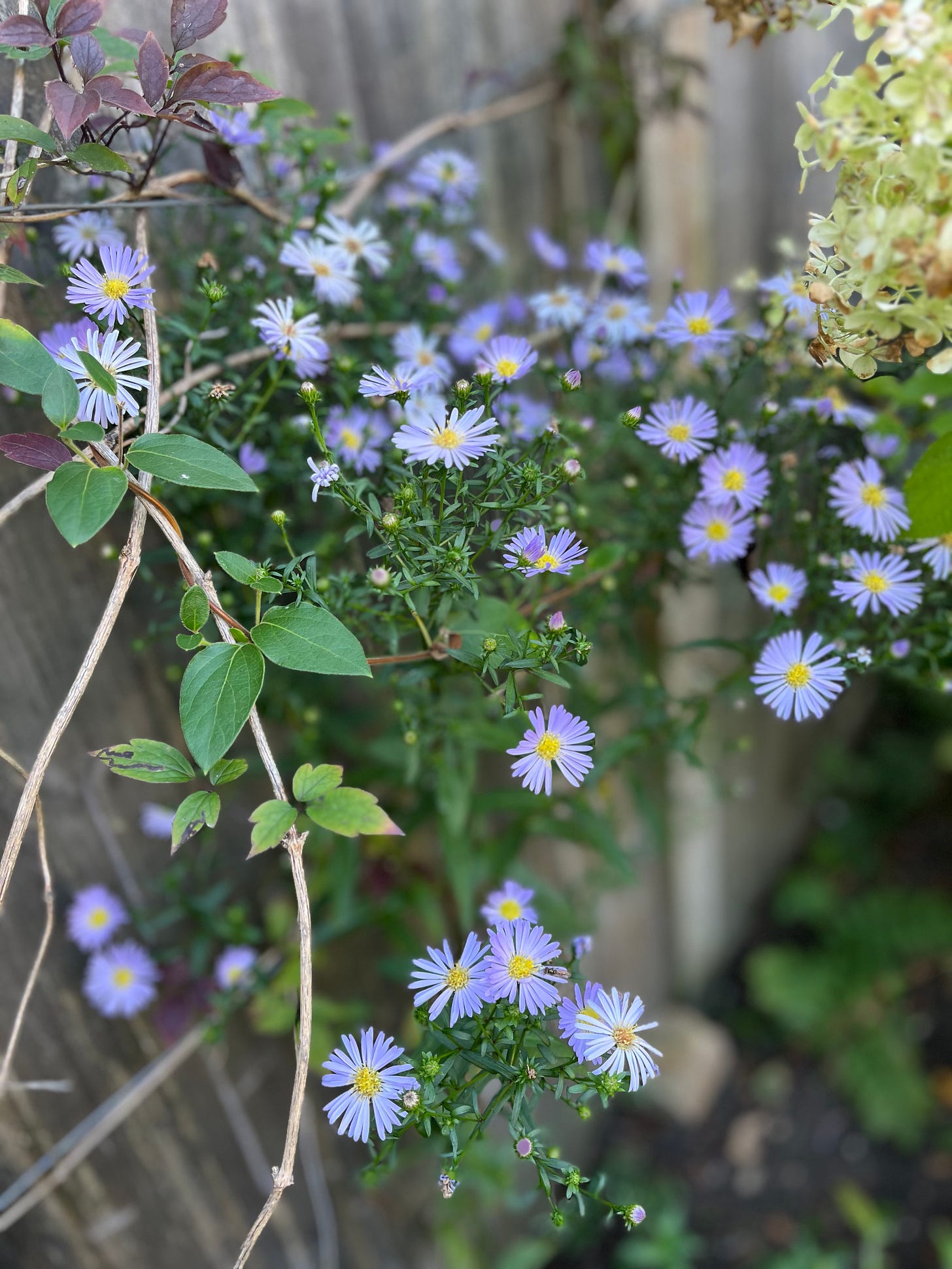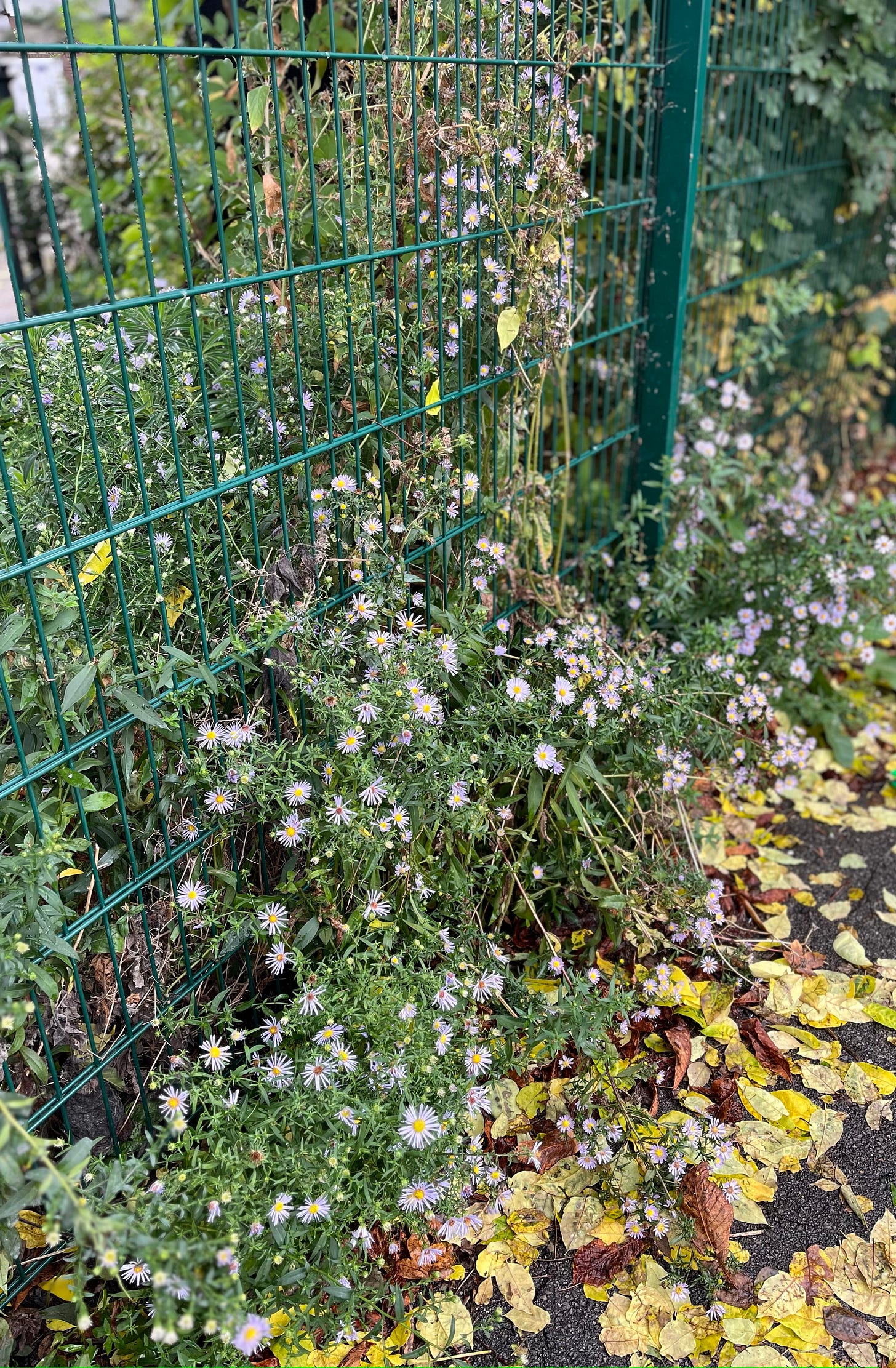Hello friends,
For those of you who missed the live EARTH deep dive call (which was SUCH a treat!), but who would like to listen back, please scroll down to the end of this post for the link to watch.
Because it was so nice to connect on that call, I’ve decided to start an Element Sessions thread on the Substack app, just as a way to continue conversations, stay in touch between calls, share any poems, readings I shared on the call etc. So if any of you would like to join, share what you are currently savouring, or just say hi! pop over by clicking the button below:
Now! to this weeks post :-)
To round out this first wave of The Element Sessions and the element of E A R T H I am so pleased to share with you this guest post from
My garden in late September still feels full, if a little bedraggled these past few days — soft pink Japanese anenomes sway on their long stems in the breeze, lilac clouds of asters make their way up the fence intertwined with clematis tendrils, sweet peas still just about reach and tumble, poppies, calendula and cosmos continue to flower, bowing low when rain-soaked but leaving a colour trail where they grow.
The flower catching my eye (and my heart) in this transitional time between late summer and early autumn, is woven deep into my garden as well as emerging ethereal along paths and roadsides, it spans earth and sky. It is deeply bound to the earth that it grows in but has far-reaching celestial connotations too — it belongs to the Asteraceae family, a name derived from an ancient word for ‘star’, which was given to the family of flowers for their star-like appearance.
Aster, in the family Asteraceae. The word aster is derived via Latin from Greek ἀστήρ (aster) meaning ‘star’. Commonly known as the Michaelmas Daisy.
I end not far from my going forth
By picking the faded blue
Of the last remaining aster flower
To carry again to you.
—Robert Frost.
As a September-born soul, I feel intrinsically drawn to the aster. It is the month’s birth flower and will always remind me of the feeling of this distinctive time — of endings and beginnings and of harvesting, gathering and layering as the light starts to dwindle and the air begins to cool. They can appear bluish in their luminosity against a backdrop of the russet, amber and bronze of autumn — so much so, they are sometimes described as ‘twilight stars’, due to their (ultra)violet tones and stellar-shaped appearance.
Traditionally known to symbolise love and wisdom, patience and beauty, enchantment and awe — the aster has a long and rich history, gaining popularity in Victorian and Edwardian gardens, with influential British horticulturist and garden designer, Gertrude Jekyll planting an entire border of asters in her garden at Munstead Wood, declaring that,
the Michaelmas daisies are so important in September and October
that it is worthwhile to give them a separate place.
—Gertrude Jekyll.
Despite its diminutive form, the aster has been draped in significance throughout history — its roots lie deep in the soil and stories of ancient mythology. The flower is closely linked to Astraea, the Greek goddess of justice and innocence, her name meaning ‘star-maiden’ or ‘starry night’ — as daughter of Astraeus, another ‘starry’ astrological deity and Eos, the goddess of the dawn, Astraea is thought to be a bringer of light and hope for humanity.
One version of her mythical tale proclaims that,
Astraea wept because she could not see any stars on earth — as her tears fell to the earth from the sky, they became star-shaped flowers, known as asters.
An account based on truth or not, I love that the flower has long been believed to be the earthly manifestation of otherworldly celestial bodies. Even more so, it is thought that Astraea became broken-hearted at the suffering she saw on the earth, and was sent by Zeus to become the constellation of Virgo to watch over humanity from the skies. It is thought that her presence as Virgo in the sky is a reminder that peace once prevailed on earth and to hold onto hope for a better world…
Further meaning has been placed on the flower throughout history. Michaelmas day is celebrated on 29th September to honour Archangel (or Saint) Michael prevailing over darkness, and the coming of autumn. In many parts of the British Isles, asters are known as Michaelmas daisies as they flower around the time of the festival, bringing much-welcomed light when so much else is fading.
Asters sprang up in my garden last year unexpectedly. I have to admit that I almost pulled out the unidentified, unkempt foliage that was making its way into one of the beds, but something told me that it was more than a weed, that it was in fact sacred. Clusters of the lilac star-like petals started to appear on the dark green foliage, like constellations studded across a velvet night sky. Just as the surrounding hydrangeas, astrantia, roses and sweet peas are beginning to fade, the asters bring a new dream-like yet rooted experience of colour to that corner of the garden.
I am not the first to find the flower to be sacred — in ancient times asters were ceremonially burned at the end of autumn to ward of snakes and evil spirits. In Ancient Greece, asters were woven into wreaths and placed on altars to honour Hectate, the goddess of magic and witchcraft.
For the first time since being in our home (nearly three years), I am feeling called to craft a more intentional altar than the mini seasonal altars dotted around the house. Asters will feature prominently of course, alongside other treasures that we find in the garden and pick up on our daily woodland walks to school. Perhaps the asters will adorn and frame the Star card from the tarot, both assuring us that even within times of darkness, there is a place where slivers of hope and light reside unfailingly — a quiet knowing that does not require action but instead the recognition that the beauty that is all around us, if we look closely enough, can provide us with sustenance and solace as we step deeper into the darker, colder days that lie ahead.
- is a mother, creative and storyteller with a background in interiors PR. Story & Thread. is a publication that feels like a cosy, layered home where the threads of creativity, interiors and mothering meet. Here, we unearth the stories from the seasons of our lives, with a house & a garden at the heart, and everyday beauty as our guide…
- The Beauty Thread., is a new membership within Story & Thread. Through a series of seasonal offerings, The Beauty Thread. is an invitation to notice, hold and create beauty in our own worlds, woven together by the ever-changing seasons, both around us and within us. Click to find out more about what is included in The Beauty Thread.
Lyndsay has generously shared with us a 30 day free trial of her full offering on Story & Thread. Click button below to avail (you’re in for a treat!)
To listen back to our live E A R T H call, click the button below.
Keep reading with a 7-day free trial
Subscribe to beauty & bone to keep reading this post and get 7 days of free access to the full post archives.










